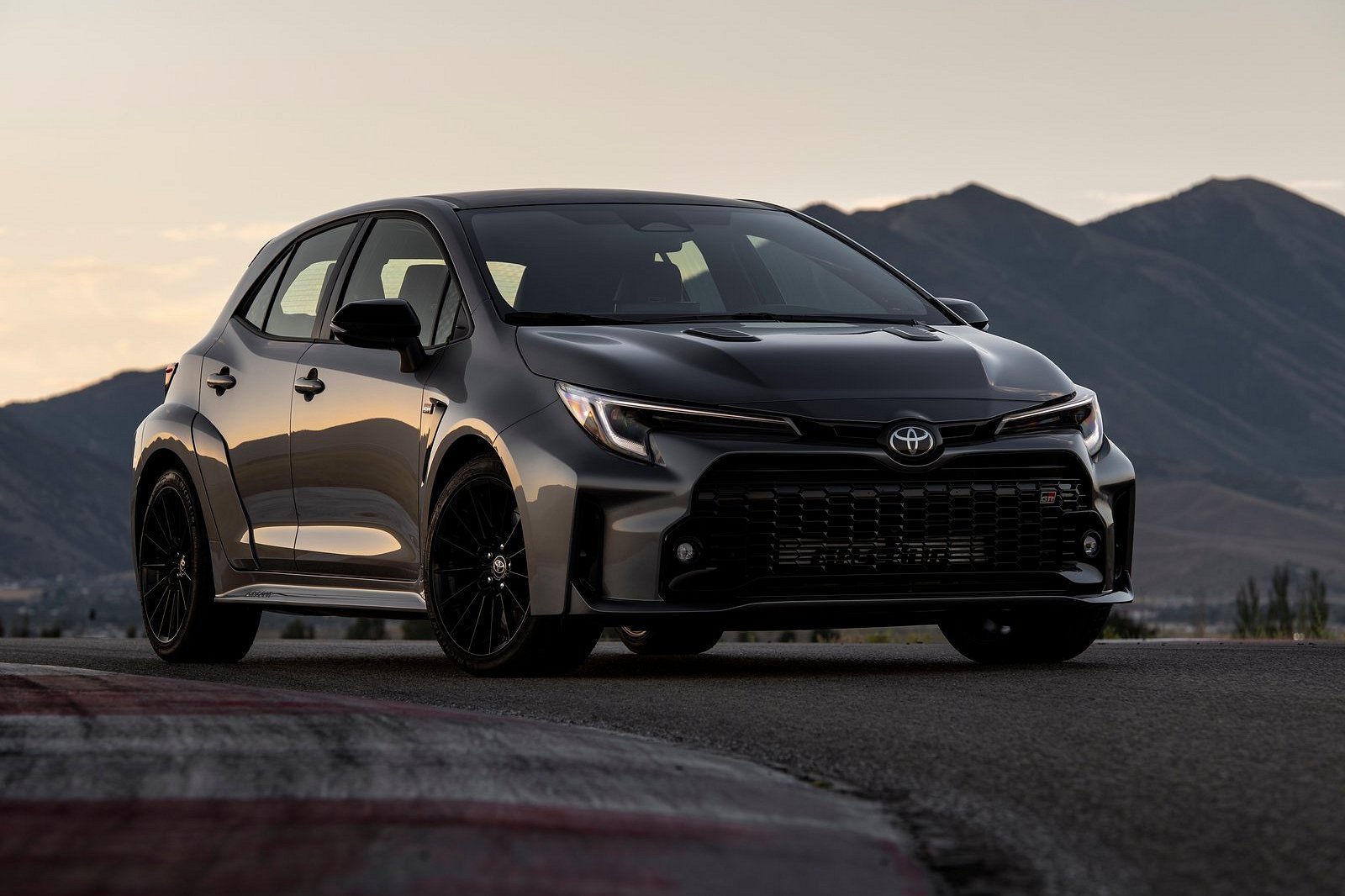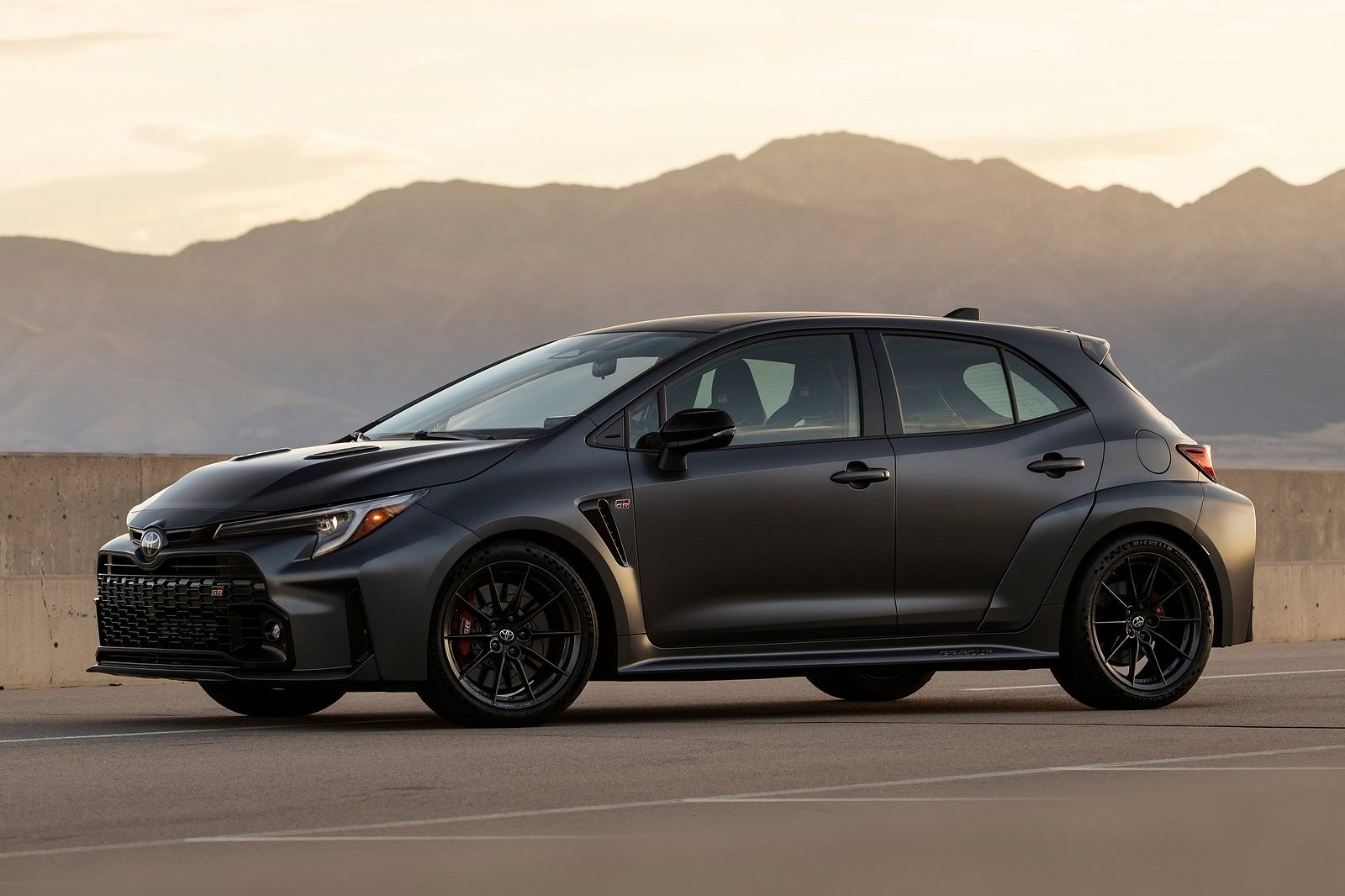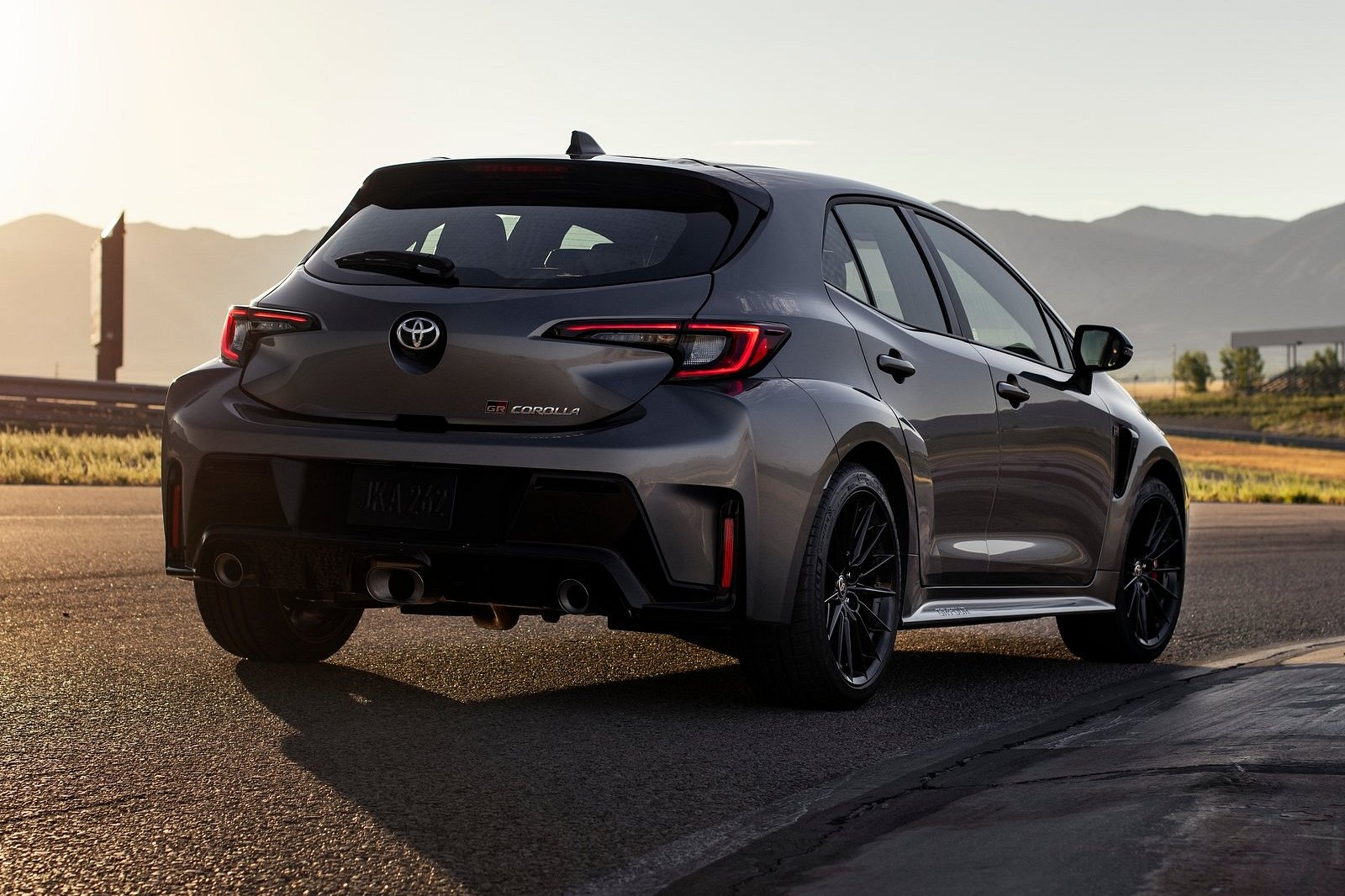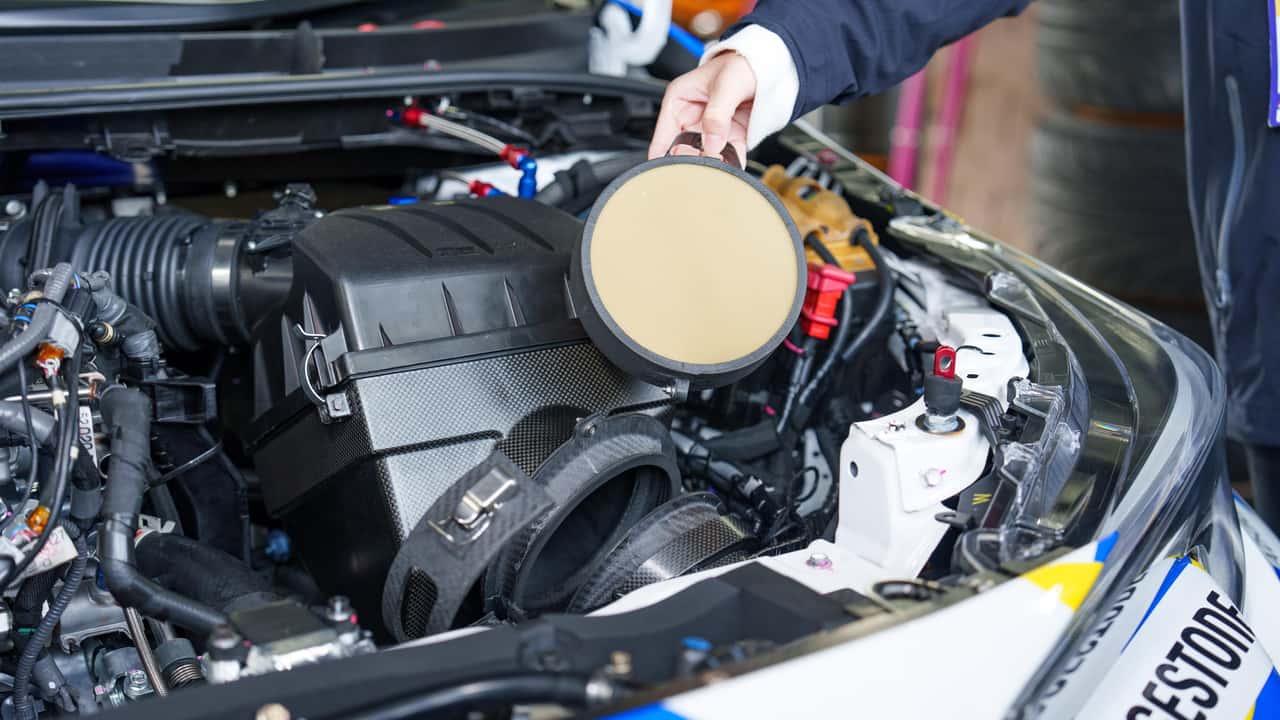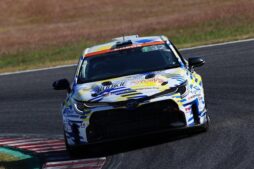Toyota Rookie Racing unveils new hydrogen-powered hot hatch in motorsports debut.
Toyota is currently working on a revolutionary carbon capturing system for their GR Corolla, a high-performance hydrogen-powered vehicle that was first unveiled at a grueling five-hour endurance race in Japan last summer. According to sources from Automotive News, this state-of-the-art filter is designed to eliminate harmful greenhouse gases while the car is in operation.
The carbon capture technology is comprised of a pair of circular filters, situated at both the front of the engine bay and the inlet of the air cleaner, which draw in 60 liters of air per second. These filters are constructed with a ceramic catalyst coated in a carbon dioxide absorbent, created by Kawasaki Heavy Industries. Their main purpose is to capture carbon dioxide from the air, and this collected gas is then stored in a receptacle filled with fluid designed to absorb carbon dioxide.

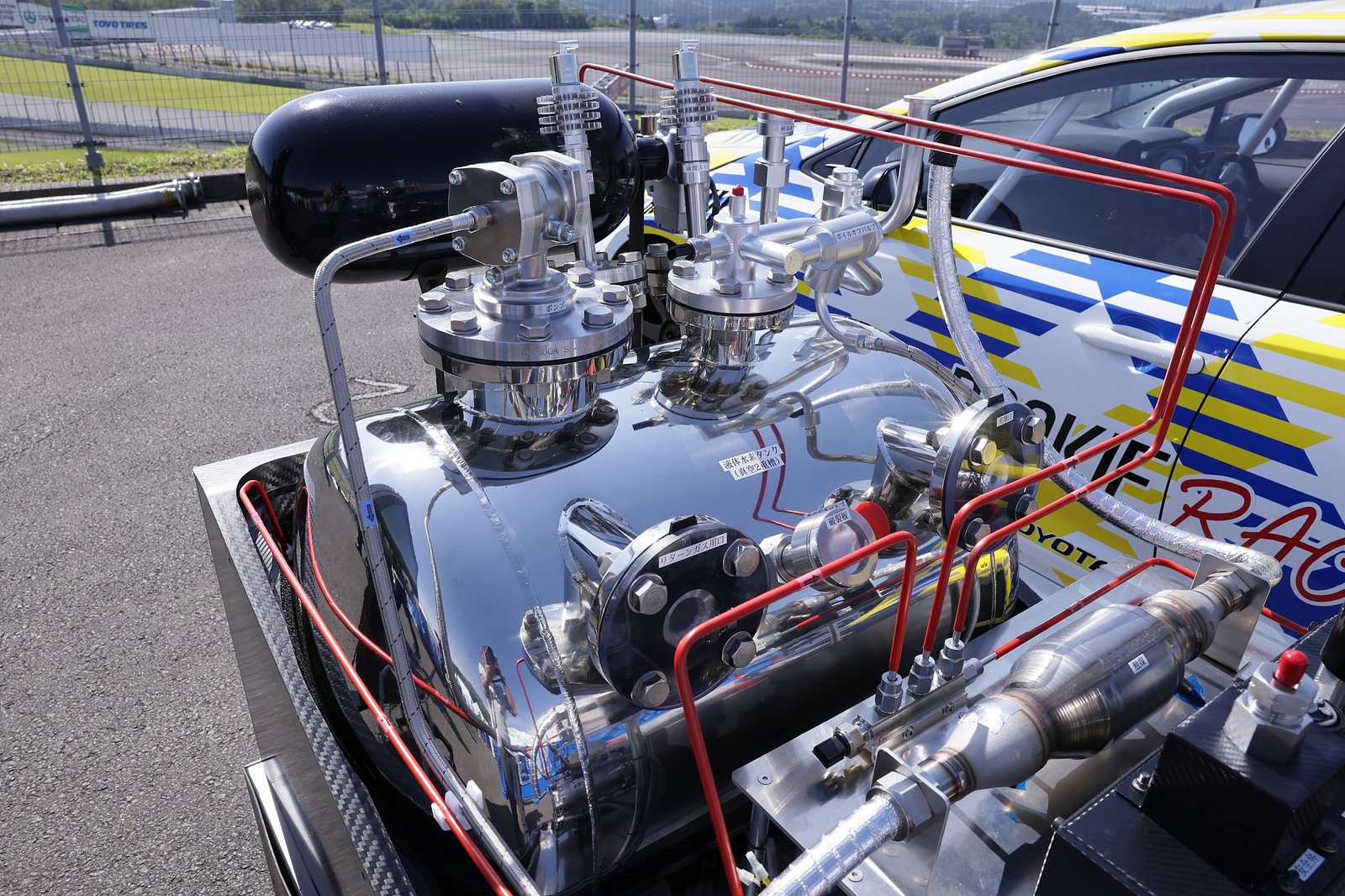
There is no need for extra energy to eliminate carbon dioxide. The heat generated by the engine causes carbon to be released from the filters and transferred into a liquid form. This liquid is then absorbed and contained within an alkyl amine solution, ready to be disposed of.
Toyota claims to be leading the way in testing a groundbreaking technology, expanding their efforts beyond electric vehicles to combat carbon emissions and achieve carbon neutrality. This includes their pursuit of developing hydrogen-powered race cars for motorsports, exemplified by the GR Corolla test car.
Although this may seem like a promising solution for the future viability of combustion engines, the team responsible for its development still faces significant challenges. During testing, Toyota’s GR Corolla only managed to capture 20 grams of carbon dioxide after completing every 20 laps, leading to the need for a filter change during each pit stop. In contrast, the average gasoline engine produces a staggering 8,887 grams of carbon dioxide per gallon consumed, according to the EPA. Clearly, there is still much progress to be made before this alternative can successfully compete with traditional engines.
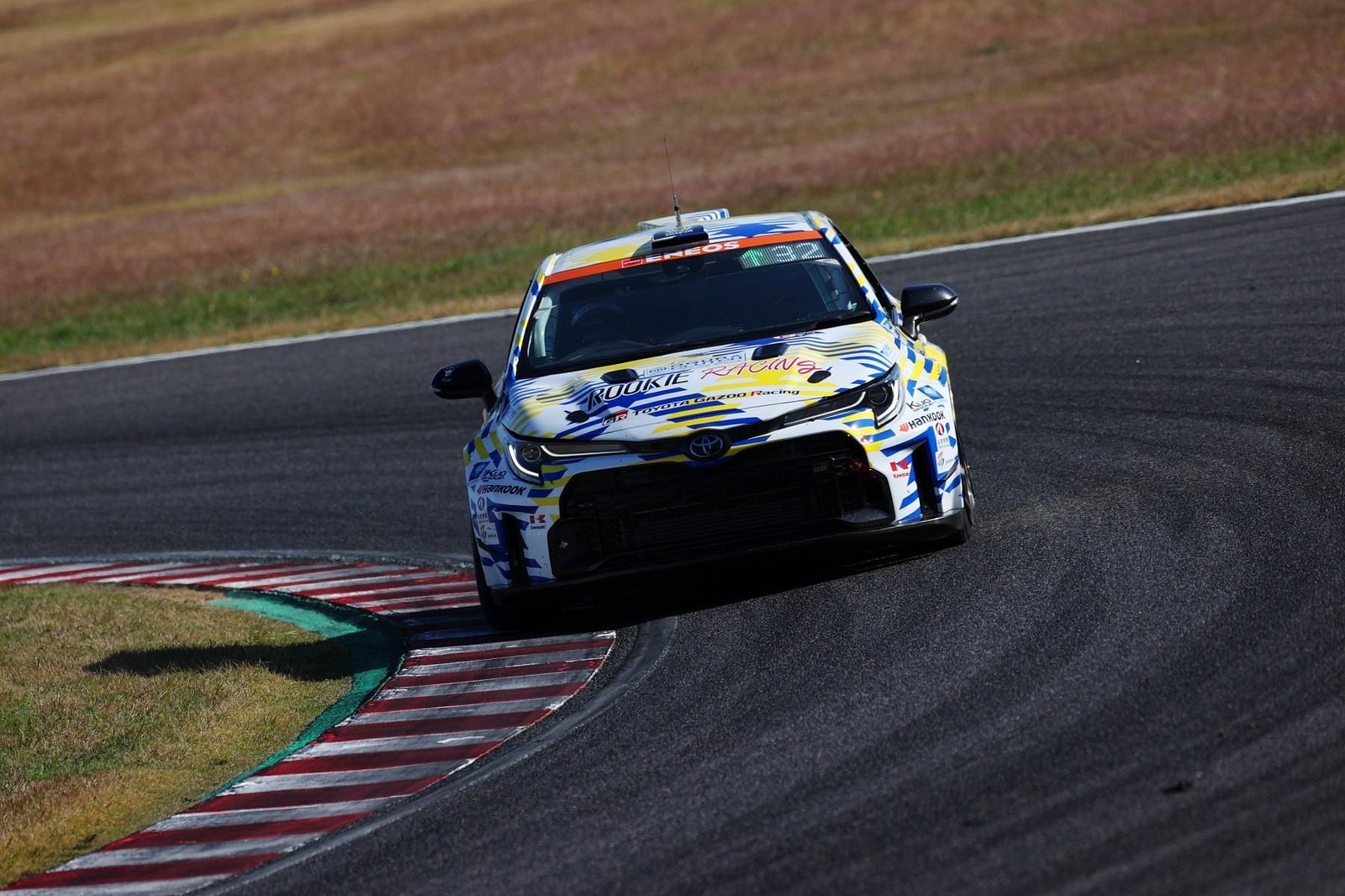

Toyota believes that this technology has potential for use in heavy-duty trucks, as larger filters would be able to capture more carbon dioxide from the atmosphere. However, the company acknowledges that the higher cost could be a barrier.
Nevertheless, the advancement of carbon capture technology is in its initial stages and has room for growth. Consequently, it could potentially emerge as a feasible solution for passenger vehicles. It is worth noting that although Toyota aims to produce electric cars in the era of electrification, they also plan to continue manufacturing combustion cars. In this context, implementing technologies like carbon capture can help Toyota evade scrutiny for their gradual yet calculated transition to electric vehicles.
According to Naoaki Ito, project general manager of GR vehicle development, “It is still very early in the development of this carbon dioxide capture technology, but we are utilizing motorsports to speed up development.”
